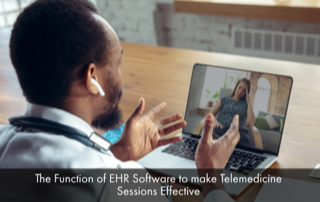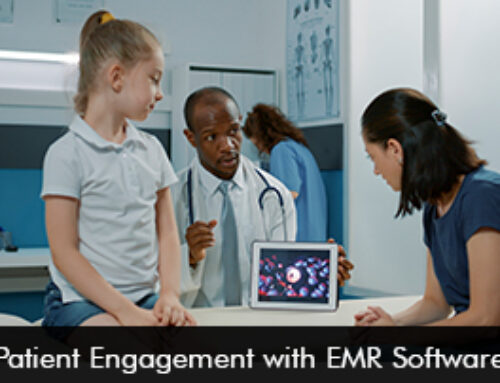When we look back at the year 2021 it has greatly changed how providers offer care services to their patients. It has been a tough year with the pandemic and even now the world is battling the new Omicron variant. This time the healthcare sector is better prepared to deal with it due to healthcare digital technologies like telemedicine EMR software platform and mass vaccine rollouts. As the virus continues to spread telemedicine adaptation rates have seen an alarming boom because it is seen as an effective tool to provide care safely and conveniently. Without telemedicine technology, it would have been impossible to provide remote care opportunities to patients and also keep healthcare providers safe from catching the virus.
It is important to know how to offer more efficient and effective ways to conduct telemedicine sessions and for hospitals and providers the answer lies in their robust Electronic Medical Records (EMR) Software system. This can in turn improve patient satisfaction scores and also enhance patient outcome levels. Telemedicine visits are here to stay, even after the pandemic gets settled it only makes sense to make these sessions fruitful for the patient.
Using EHR software Systems for well-organized telemedicine visits
- Create telemedicine-specific templates – The information required for a telemedicine visit is different as compared to in-person sessions with the provider. It is advised that providers create templates inside the EMR software system that are specific to telemedicine. This will ensure that the claim process goes smoothly without any hitches. The telemedicine templates will support proper documentation for the medical billing staff to submit for reimbursements.
- Use an integrated software solution – A practice must use an integrated software system to promote seamless and accurate data transfers into the Electronic Health Records (EHR) Software reducing any errors related to patient check-ins and insurance verification. A single integrated system is a key to avoiding any risks and errors and also saves time associated with the transfer of data.
- Reporting and analytics can aid healthcare organizations – Reporting and analytics tools in the Electronic Health Records software can help provide meaningful data and insights about patient patterns. For example, a practice can identify the patients who have not been coming for their check-ups, and then staff members can reach out to them to fix the obstacles they are facing in receiving care. This way issues can be addressed quickly and patients will feel important. The analytics tools can also provide helpful alerts about recommended care for your patients which can enhance their care process.
Concluding remarks
If a practice hasn’t deployed an intuitive and integrated EMR software solution then the following EMR software options can be a good pick for any medical practice to improve efficiencies and streamline clinical, financial, and administrative tasks. The following suggestions have been made by our software specialists according to software functionality, ease of use, integration options, and customer services.







